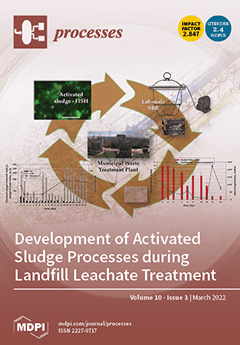Pulasan (
Nephelium mutabile Blume) is an underutilized fruit native to tropical countries, including Malaysia, Thailand, and Indonesia. To date, the medicinal potential of
pulasan remains unexplored, although this fruit shares the same genus with the well-known
rambutan (
Nephelium lappaceum).
[...] Read more.
Pulasan (
Nephelium mutabile Blume) is an underutilized fruit native to tropical countries, including Malaysia, Thailand, and Indonesia. To date, the medicinal potential of
pulasan remains unexplored, although this fruit shares the same genus with the well-known
rambutan (
Nephelium lappaceum). Therefore, the current study aims to examine the antioxidant properties of different parts of
pulasan (flesh, rind, and kernel) and investigate the bioactive profile, anti-hypertensive and hypoglycemic properties of
pulasan rind.
Pulasan were extracted using different solvents, including distilled water, methanol, and ethanol. The antioxidant capacity was measured using 2,2-diphenyl-1-picrylhydrazyl (DPPH), Trolox equivalent antioxidant capacity (TEAC), and ferric reducing antioxidant power (FRAP), and the antioxidant component was identified by total flavonoid content (TFC) and total phenolic content (TPC). The bioactive profile of
pulasan rind was characterized by high-performance liquid chromatography (HPLC). The anti-hypertensive and hypoglycemic properties of
pulasan rind were determined with angiotensin-converting enzyme (ACE) assay and alpha-amylase inhibition assay, respectively. Emerging findings revealed that
pulasan rind exhibited the highest antioxidant capacity (DPPH, TEAC, and FRAP) in all extraction solvents and antioxidant components (TPC and TFC) in ethanolic extract. The ethanolic extracts of
pulasan rind also had higher ACE and alpha-amylase inhibition activities than the distilled water extracts. Geraniin, chlorogenic acid, catechin, corilagin, syringic acid, and naringenin of
pulasan rind may function as anti-hypertensive agents.
Full article





